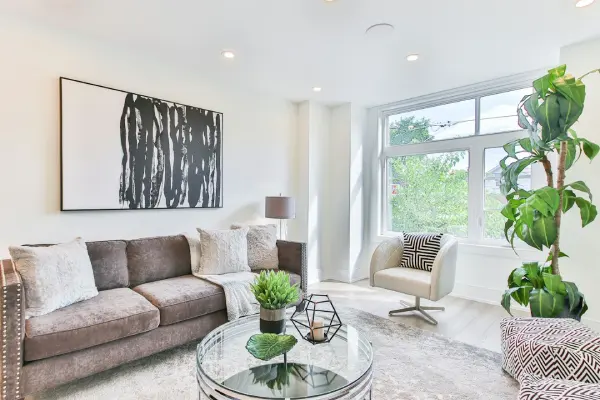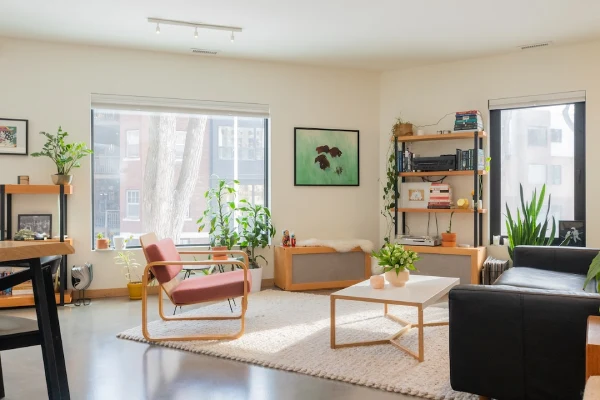Inviting nature into your home doesn’t always have to involve soil and watering cans. Artificial plants have become a trendy and convenient way to infuse your living space with a touch of greenery without the upkeep. Whether your home’s style leans toward minimalistic elegance or eclectic charm, there are faux plant options to complement your decor. By carefully choosing and positioning these lifelike botanicals, you can create a beautiful, hassle-free environment. Below, we’ll explore various techniques to enhance your living space with artificial plants.
Selecting the Right Artificial Plants for Different Rooms in Your Home

Each room in your home has a unique function and atmosphere, which should be considered when selecting artificial plants. For instance, a bold fake indoors tree can serve as a focal point in a spacious living room, while smaller succulents may be better suited for a home office or bathroom. It’s key to choose plants that align with the light and scale of each space.
Kitchens can benefit from faux herb plants or hanging vines that evoke a fresh and inviting feel, whereas the bedroom might call for calming greenery, such as a set of realistic-looking ferns. Remember to assess the color scheme of your room and pick plants with complementary tones to enhance the overall aesthetic.
Not to overlook the children’s rooms and play areas, artificial plants in these spaces should be both playful and durable. Consider whimsical shapes and bright colors that can stimulate creativity while being resistant to curious little hands. They can bolster the theme of the room while remaining a no-fuss decor option.
In the dining area, where the setting is often formal, select elegant and understated pieces that don’t overwhelm the table setting. A simple orchid or an arrangement of artificial peonies can bring grace to meals without clashing with the dinnerware.
Achieving Balance and Proportion with Fake Greenery
To ensure the desired impact, it’s crucial to achieve a sense of balance and proportion when decorating with fake greenery. One strategy is to vary the size and height of your plants to create an engaging visual flow. Just as in nature, diversity in foliage and structure can lead to a more dynamic and pleasing arrangement.
Scale and proportion are equally important in interior decorating. Massive plants can make a small room feel cluttered, while tiny plants in a large, open space might look lost and insignificant. Utilize larger plants, like artificial palms, to make an empty corner more inviting while reserving petite plants for shelves and tabletops.
Consider symmetry when positioning your plants, particularly in formal or traditional settings. However, asymmetry can be equally impactful in more modern and relaxed environments, promoting a sense of movement and interest.
Balance isn’t just about the plants themselves but also their containers. Choose pots and planters that align with the weight and scale of the greenery while enhancing the room’s decor. A heavy ceramic pot can anchor a large faux tree, whereas a small delicate vase is perfect for a single stem.
Integrating Artificial Plants with Living Decor for a Natural Look

Mixing artificial plants with living decor elements can make for a seamless, natural look. Consider placing faux plants alongside real ones; this not only adds variety but also can help conceal the non-living nature of the artificial greenery. The key is to choose high-quality faux plants that look as close to the real thing as possible.
Luxurious textures, from pillows to throws, can complement the silkiness of artificial foliage. Utilizing natural materials like wood, stone, and bamboo in your decor can mimic the textures found in nature, thus enhancing the overall organic feel of the room.
Incorporating elements like books, art, and collectables around your faux plants can give the impression that they’ve been part of your home for years. This well-lived-in look will keep the plants from sticking out as artificial additions to the space.
Subtle layering with varying plant types and sizes can also play a significant role. Consider setting larger trees behind furniture and placing smaller plants in the foreground for a look that naturally draws the eye throughout the space.
Overall, decorating with artificial plants provides the lush allure of greenery without the upkeep of live plants. Whether you’re aiming for a tropical oasis or a minimalist retreat, greenery can play a pivotal role in achieving your desired aesthetic.
